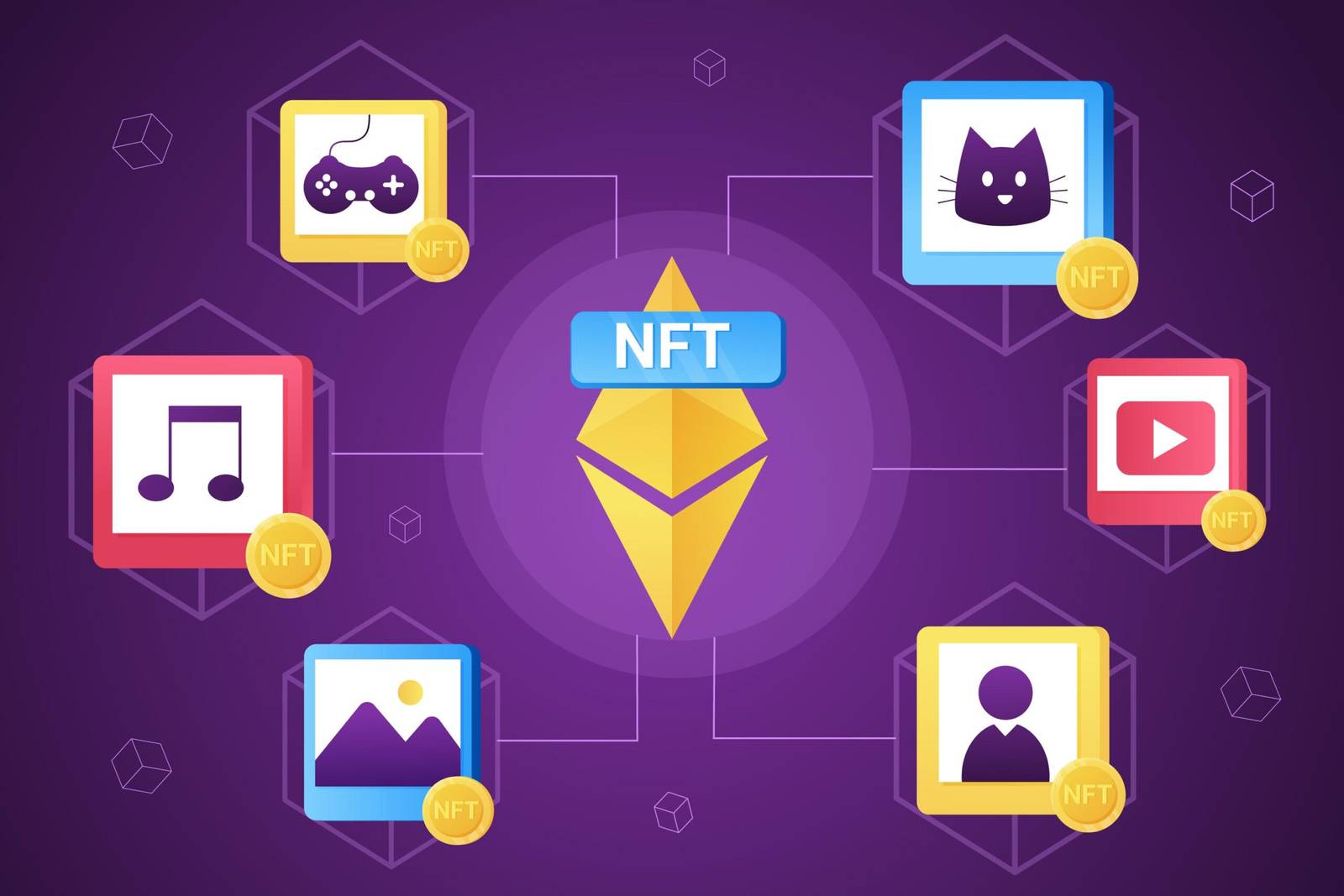The Rise of NFTs in Digital Marketing

by Web Digital
In recent years, the digital landscape has witnessed the emergence of Non-Fungible Tokens (NFTs) as a groundbreaking phenomenon. Initially rooted in the world of art and collectibles, NFTs have transcended their niche origins to infiltrate various industries, including digital marketing. This article delves into the rise of NFTs in digital marketing, exploring their potential impact, applications, and implications for marketers in 2023 and beyond.
What Are NFTs?
Before we dive into their role in digital marketing, let’s briefly understand what NFTs are. NFTs are unique digital assets that represent ownership or proof of authenticity of a specific digital item, often utilizing blockchain technology. Unlike cryptocurrencies like Bitcoin or Ethereum, which are fungible and interchangeable, NFTs are non-fungible, making each token distinct and irreplaceable.
NFTs in Digital Marketing
The integration of NFTs into digital marketing is still in its infancy, but its potential is vast. Here are several ways NFTs are making their presence felt in the digital marketing landscape:
1. Branding and Authenticity
NFTs can be used to authenticate digital products, content, or collectibles associated with a brand. By attaching an NFT to a piece of content, marketers can prove its origin and uniqueness, fostering trust and transparency with their audience.
For instance, a fashion brand might release a limited-edition NFT representing a unique digital fashion item. By owning this NFT, customers can verify the authenticity of the associated digital product, which can range from virtual fashion pieces to exclusive wallpapers or digital art.
2. Digital Collectibles and Loyalty Programs
Digital marketers can create exclusive NFT-based collectibles or tokens to reward customer loyalty and engagement. These NFTs can be used as part of loyalty programs or to recognize and incentivize customers who actively engage with a brand’s content or products.
Imagine a gaming company that offers NFT-based in-game items as rewards for participating in online tournaments or purchasing merchandise. These collectibles can be traded or showcased in virtual galleries, enhancing the brand’s relationship with its audience.
3. Content Monetization
NFTs open up new avenues for content creators and influencers to monetize their work. Digital marketers can collaborate with influencers to create NFTs that represent exclusive content, such as behind-the-scenes footage, limited-edition tutorials, or personalized shoutouts.
For example, a beauty influencer might release NFTs that grant access to premium makeup tutorials or exclusive product recommendations. These NFTs can be sold or auctioned to dedicated followers, providing a novel revenue stream for influencers and marketers alike.
4. Virtual Real Estate and Events
Virtual worlds and metaverse platforms are becoming increasingly popular, and NFTs play a pivotal role in these environments. Digital marketers can invest in virtual real estate within these metaverse platforms, where they can host events, product launches, or immersive brand experiences.
Marketers can also collaborate with metaverse creators to design branded spaces or experiences within virtual worlds. These experiences can be monetized through NFT ticketing or exclusive virtual merchandise, reaching audiences in entirely new dimensions.
5. Limited-Edition Campaigns
Limited-edition NFT campaigns can drive excitement and urgency around product launches or marketing events. Marketers can release a limited number of NFTs tied to a campaign, creating a sense of exclusivity and collectibility.
For instance, a music artist might release a limited number of NFTs that grant early access to their upcoming album or a private virtual concert. The scarcity of these NFTs can drive fan engagement and boost marketing campaign effectiveness.
Challenges and Considerations
While the integration of NFTs in digital marketing offers numerous opportunities, it also presents challenges and considerations:
1. Accessibility and Education
Not all consumers are familiar with NFTs and their use cases. Marketers must educate their audience about NFTs and ensure that the concept is accessible to a broader demographic.
2. Environmental Concerns
The environmental impact of blockchain networks, often used for NFT transactions, has raised concerns. Marketers must consider the sustainability implications of their NFT initiatives and explore eco-friendly blockchain alternatives.
3. Regulation and Legalities
The regulatory landscape for NFTs is evolving. Marketers must stay informed about the legalities surrounding NFTs, especially when offering NFT-based products or services.
4. Market Saturation
As NFTs gain popularity, the market may become saturated with similar offerings. Marketers should focus on creativity and uniqueness to stand out in a crowded NFT space.
Conclusion
The rise of NFTs in digital marketing represents a transformative shift in how brands engage with their audiences and monetize digital content. By leveraging NFTs, marketers can enhance authenticity, loyalty, and engagement, while also exploring novel revenue streams. However, it is crucial for marketers to approach NFT integration thoughtfully, addressing challenges such as accessibility, sustainability, and legal compliance.
As NFT technology continues to evolve, digital marketers who stay ahead of the curve and adapt their strategies to incorporate these unique assets will likely find themselves well-positioned to navigate the evolving digital landscape of 2023 and beyond.
Recommended Posts

Web Design Portfolio Tips for Canadian Freelancers
September 27, 2025

The Cost of SEO Services in Canada
September 27, 2025

How to Use Google Business Profile for Local SEO
September 26, 2025
